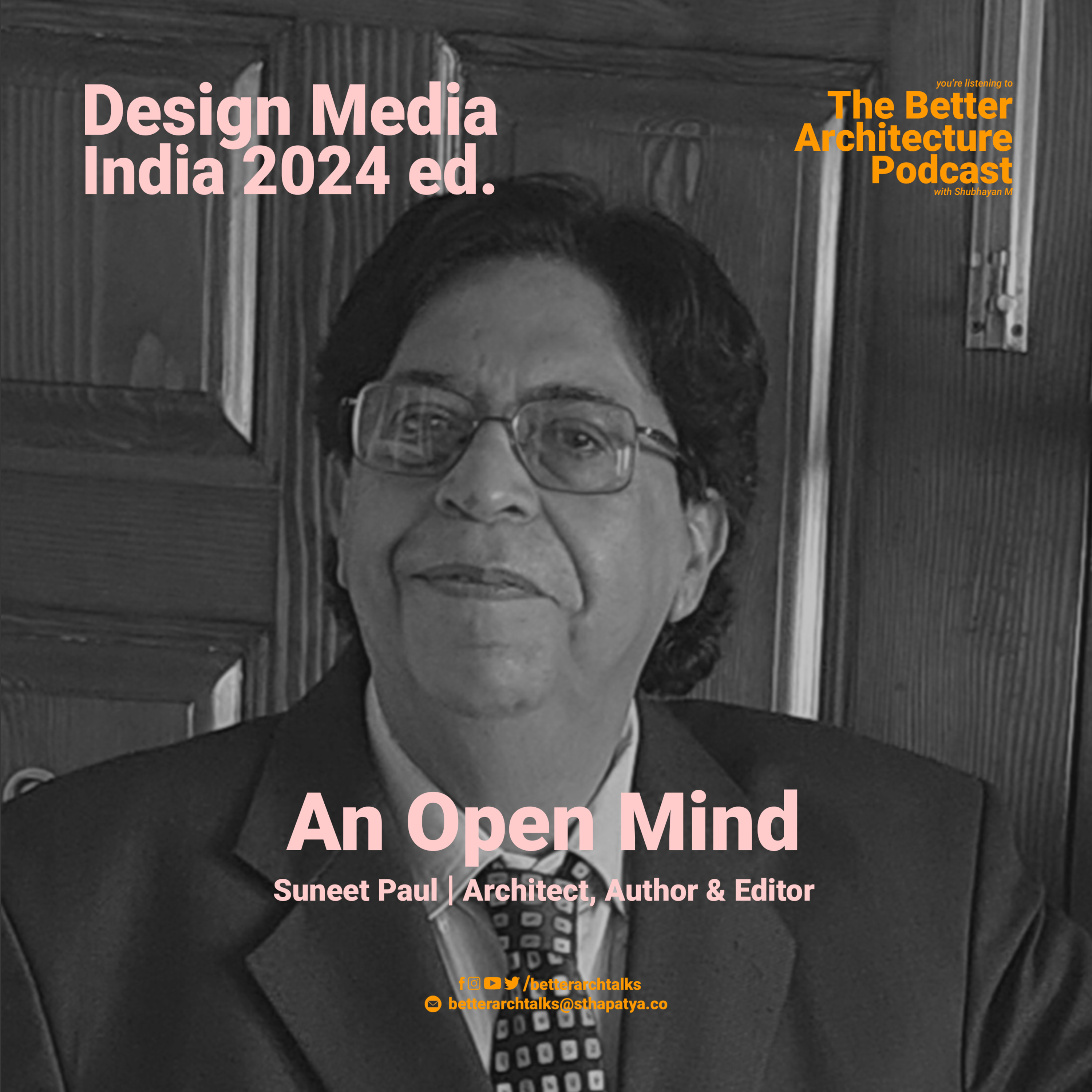Get Trained
Episode at a glance
The conversation with Mridula Sharma reflects on her decades of experience in design journalism, offering insights into the evolution of design media in India, the role of storytelling, and the challenges of sustaining quality content in a rapidly changing landscape. Mridula traces the progression from print-dominated design magazines in the 1980s and 1990s, catering primarily to homeowners, to today’s digital-first platforms engaging diverse audiences. She underscores the need for design media to adapt by pivoting its focus, improving production quality, and catering to segmented audiences.
Mridula discusses the role of public critique in fostering a more informed appreciation of architecture and design, emphasizing that design media must move beyond mere reportage to include critical evaluations of public and private projects. She highlights the need for a collaborative approach across the design ecosystem, advocating for trade bodies to support media sustainability through shared goals and financial backing.
Addressing young professionals, Mridula emphasizes the importance of formal training in journalism to meet the demands of the industry, where editorial standards are high and leaner teams demand self-sufficiency. She advises students and young architects to actively write, network, and explore intersections between design and media, while also recognizing the financial and logistical challenges in pursuing this career path.
——————————————————————————————————————————————
Thematic highlights of the conversation
- Evolution of Design Media
Design media has shifted from print-centric formats focused on homeowners to a digital-first approach addressing wider and more diverse audiences. - Adapting to Changing Media Landscapes
Magazines must reinvent themselves by improving production quality, defining niche audiences, and providing tailored content to remain relevant in the digital age. - Role of Critique in Design Media
Design media should prioritize critical evaluations of public and private projects to foster informed discourse and elevate public understanding of architecture and design. - Collaborative Approaches for Media Sustainability
Trade bodies and industry stakeholders must collaborate to ensure financial and operational sustainability of design media, supporting its social responsibility while enabling profitability. - Production Quality and Audience Segmentation
High production quality, including layouts and visuals, is crucial for design magazines, which must also define and serve specific audience segments effectively. - Training and Skill Development
Formal training in journalism equips young professionals with essential skills for editing, reporting, and storytelling, ensuring they meet high editorial standards. - Challenges in Career Sustainability
Design media offers limited financial rewards compared to other professions, requiring practitioners to balance passion with financial pragmatism. - Networking and Active Writing
Mridula encourages students and young architects to actively write, contribute to college magazines, and network at design events to build their portfolios and gain industry exposure. - Critical Mass for Industry Collaboration
The design ecosystem has reached a critical mass where collaboration among stakeholders is essential to create impactful trade bodies and lobby for industry-wide causes. - Emphasis on Problem-Solving in Design
Future design trends will prioritize problem-solving over aesthetics, encouraging young professionals to approach design challenges with innovative solutions. - Mentorship and Knowledge Sharing
Mentorship is essential for guiding young professionals, enabling them to avoid common pitfalls and benefit from the experiences of industry veterans. - Vision for Inclusive and Impactful Media
Mridula envisions design media evolving into a platform that fosters inclusivity, collaboration, and critical engagement across disciplines.
——————————————————————————————————————————————
Disclaimer: The views expressed by the guest are contextual responses to the host’s questions, holding immediate relevance within the scope of the conversation; the points discussed are part of a larger, interconnected knowledge network. This summary is provided for the ease of readers and should not be interpreted in isolation. You are encouraged to engage with the full episode on Spotify to gain a comprehensive understanding.
——————————————————————————————————————————————
You can connect with Mridula here: Website | LinkedIn | Instagram | Facebook | X/Twitter
Note: This episode was recorded while Mridula Sharma was working for Livingetc India.
Copyright 2024 @ BetterArch.org















